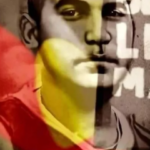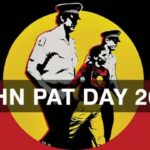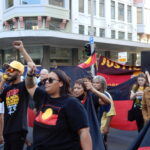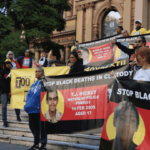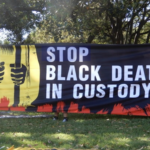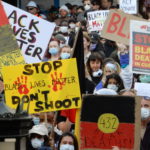Another Teen Death in Custody, Despite 30-Year-Old First Nations Advice to Parliament
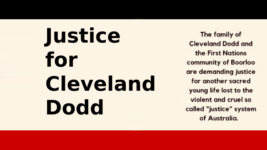
The recent death in custody of 16-year-old First Nations boy Cleveland Dodd has yet again highlighted the barbarity the Australian prison system metes out towards Aboriginal and Torres Strait Islander detainees, especially Indigenous youths.
For his part, Dodd was on remand, meaning his case wasn’t finalised and he was awaiting potential bail. Yet, despite the possibility of being released prior to his question of guilt being put to the court, the teen was detained in Unit 18: a section of Casuarina adult maximum-security gaol.
WA only has one child prison, Banksia Hill, which is notorious for its harsh conditions, mistreatment of inmates and overcrowding. So, since July 2022, WA correctional authorities have been placing those considered the most difficult inmates in this unit reserved for children in the adult facility.
Child detainees can be as young as 10 in Western Australia. And over the year 2021-22, 64 percent of kids in that state’s prison system were First Nations youths, even though Indigenous kids account for only 6.4 percent of that state’s overall populace aged between 10 to 17.
Dodd attempted to take his own life on 12 October. And on being found unconscious in his cell, he was resuscitated and taken to hospital where he died a week later.
But the obvious question is: why would Dodd take his own life when he was likely to soon be released on bail? And those monitoring these deaths would respond that outcomes like this are all too common, as it’s as if the Australian carceral system is designed to produce such results.
A legacy of invasion
The Australian adult prisoner system sat at 42,204 inmates in June this year, with 14,011 of them being First Nations people. This means that 33 percent of all adults in Australian prisons were Indigenous, yet, looking at the overall populace, First Peoples only account for 3.2 percent of it.
So, 235 years after the British commenced the forcible takeover of this continent under the false pretence that it was empty, those people the invaders attempted to kill off and dispossess of their land, now make up a starkly disproportionate number of the people in the state’s prisons.
And the fact is that a nation established under the British Crown via conflicts known as the Frontier Wars – which were followed by a concerted effort to erase the memory of these battles from history – now sees the former enemy of the invaders continuing to be placed in its gaols at increasing rates.
And this situation is only getting worse, as at the time the Royal Commission into Aboriginal deaths in custody handed down its final report in 1991, 14 percent of the adults incarcerated in the nation’s gaols were First Nations people, which was drastically disproportionate even at this lower rate.
Right now, the death count the Australian Institute of Criminology National Deaths in Custody Program keeps outlines that the number of Aboriginal and Torres Strait Islander deaths whilst in the custody of either police or correctional officers is at 556 individuals since the Royal Commission.
As evidenced by the WA figures, the nation of Australia also has a predilection for locking up Indigenous children at rates that are completely out of proportion when compared to the number of children in the general populace that they account for.
Over the 12 months 2021-22, 45 percent of youths in the NSW prison system were Indigenous kids. In Queensland, this figure sat at 64 percent, whilst in the Northern Territory, 93 percent of children in that jurisdiction’s kiddie prisons were First Nations kids.
“Carnage on our children”
“Our family is overwhelmed with grief as we come to terms with the unthinkable – the loss of our most beloved boy, who did not belong in that horrible place known as Unit 18,” the family of Cleveland Dodd said in a statement on the day after he died. “We want answers.”
Their message further sets out that Dodd had never self-harmed before he found himself in Unit 18. And it underscored that, as First Nations people, they can no longer “stand by and watch this carnage on our children”, adding that they “will not rest until justice for our boy… is secured”.
Locking up children in adult facilities is a breach of their human rights. Adult facilities are not designed with children in mind, as the conditions are more severe than those purpose-built for kids. And if Australia abided by international standards, it wouldn’t repeatedly utilise this practice.
“Close Unit 18 without further delay – a maximum security adult prison is no place for children,” Cleveland’s family continues. “To all the children detained in Banksia Hill and Unit 18, we say stay strong, look out for one another.”
Levitt Robinson Solicitors, who are acting on behalf of the family for the coronial inquest, also stated in the wake of Cleveland’s death that the harms that the Western Australian courts have already recognised in regard to the kids being held in Unit 18, will be fully exposed at the inquest.
Knowingly left to run its course
Bowing to public pressure, the Hawke government established the Royal Commission into Aboriginal Deaths in Custody in 1987. The investigation considered the deaths of 99 First Nations peoples in the custody of police and corrections, and the final report made 339 recommendations.
However, the overwhelming majority of these directions that laid out how the deaths of First Peoples could be brought to an end in the prison system were all but ignored. Even the most basic, like removing all hanging points from cells, continue to remain outstanding and cost real lives.
Two recommendations are the 87th and the 92nd, which state that people should only be arrested when there’s no other way of dealing with the situatoin and that “imprisonment should be utilised only as a sanction of last resort”.
Yet, the figures cited show that instead of imprisonment being avoided at all costs, this punishment is increasingly being applied to First Nations peoples as they continue to be gaoled en masse, and the overpolicing and disproportionate arrest of Indigenous people is also reflected in the data.
A key point that Senator Lidia Thorpe repeatedly made during the Voice referendum campaign was that rather than establish a special advisory body to assist government in alleviating the issues that face First Nations communities specifically, why not just act on the suggestions already before it.
Indeed, after three decades of being in possession of a blueprint, five years in the making, on how to bring the issue of Indigenous custody deaths to an end, the Australian government’s refusal to implement these recommendations reflects that it’s satisfied with the system’s outcomes at present.


